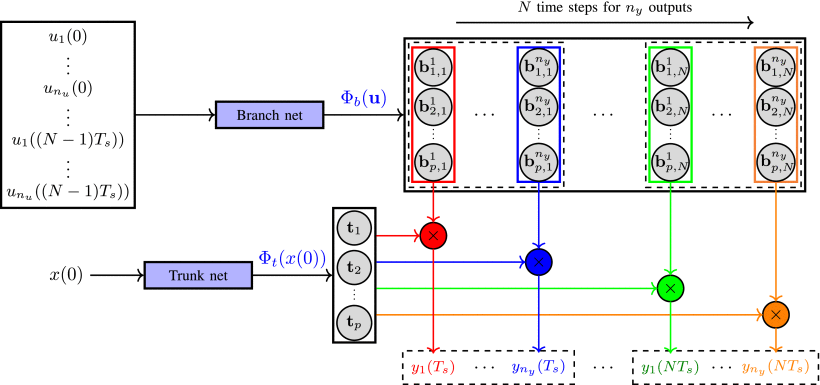Recent Articles and Multimedia
Paper Title: Deep Operator Neural Network Model Predictive Control
Authors: Thomas de Jong, Khemraj Shukla, and Mircea Lazar
The integration of Deep Operator Neural Networks (DeepONets) with model predictive control (MPC) enables efficient prediction and control of nonlinear Multi-Input Multi-Output (MIMO) systems. In this work, the authors develop a multi-step DeepONet (MS-DeepONet) architecture that achieves accurate multi-step sequence prediction and demonstrate its superior performance over standard DeepONet and LSTM-based MPC in terms of accuracy, control, and computation time.
READ MORE ABOUT THIS PAPER HERE

Multi-step DeepONet architecture: the branch input at time instant t = 0 is the multi-step input sequence u ̄0; the trunk input is the measured state x(0); the output is the predicted multi-step output sequence y ̄0.